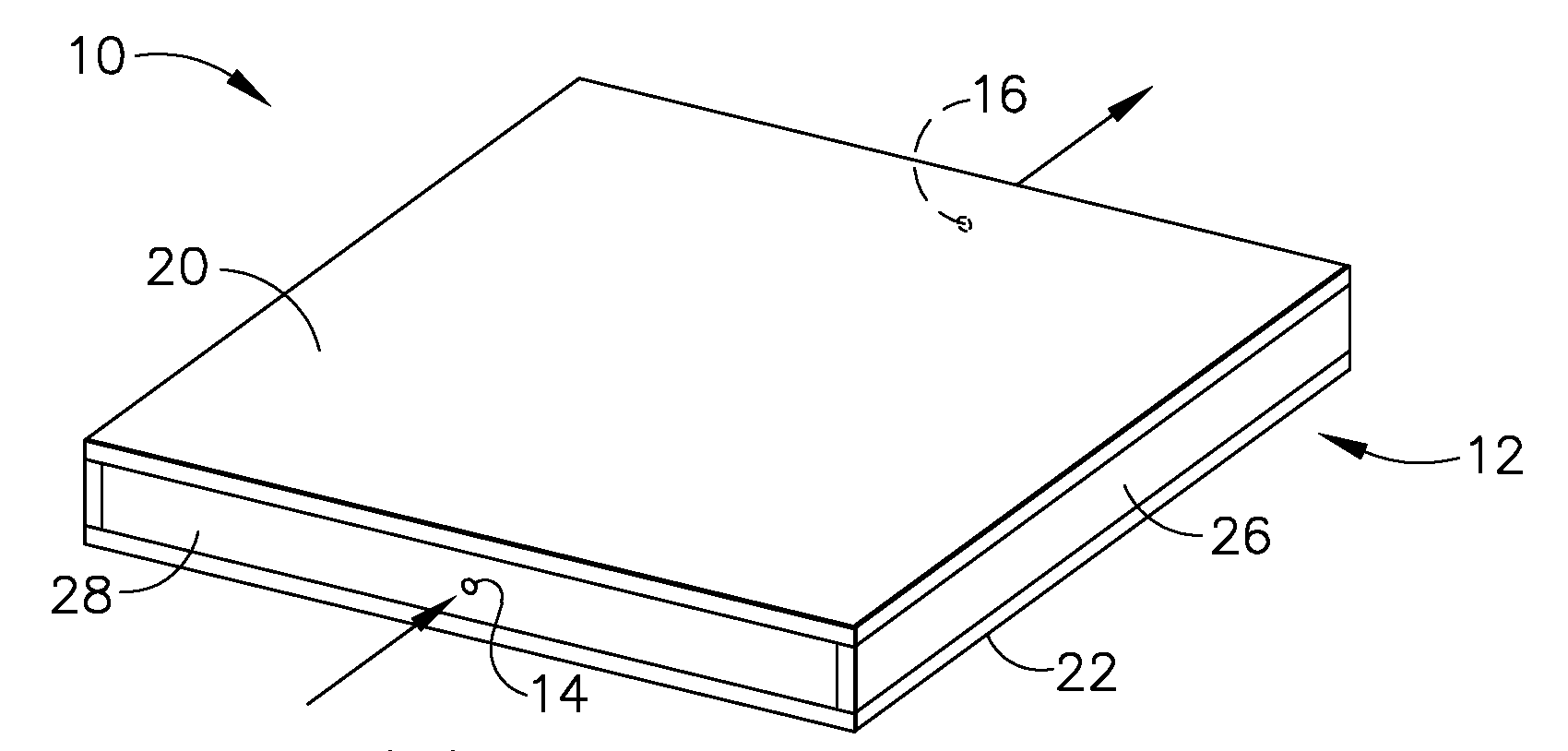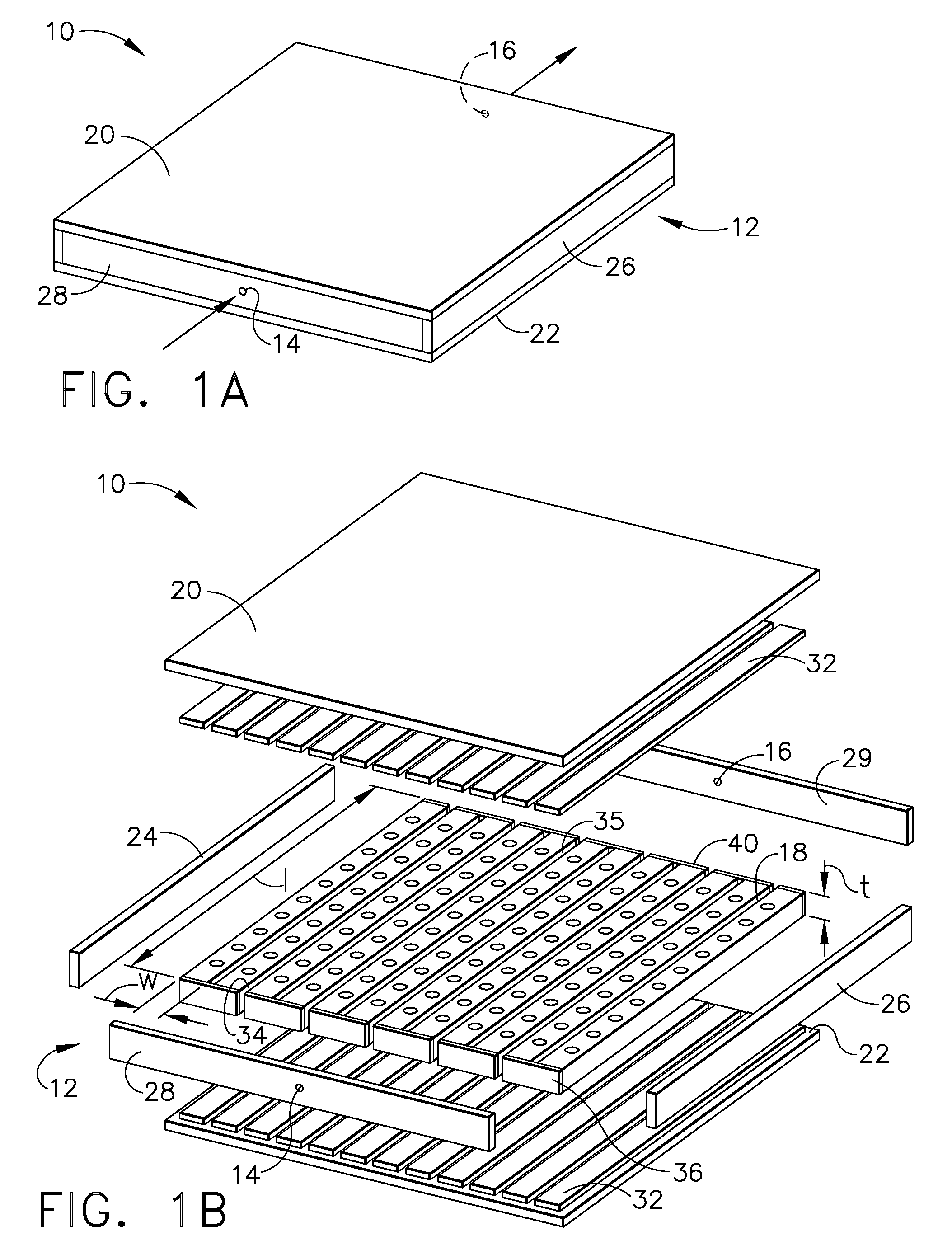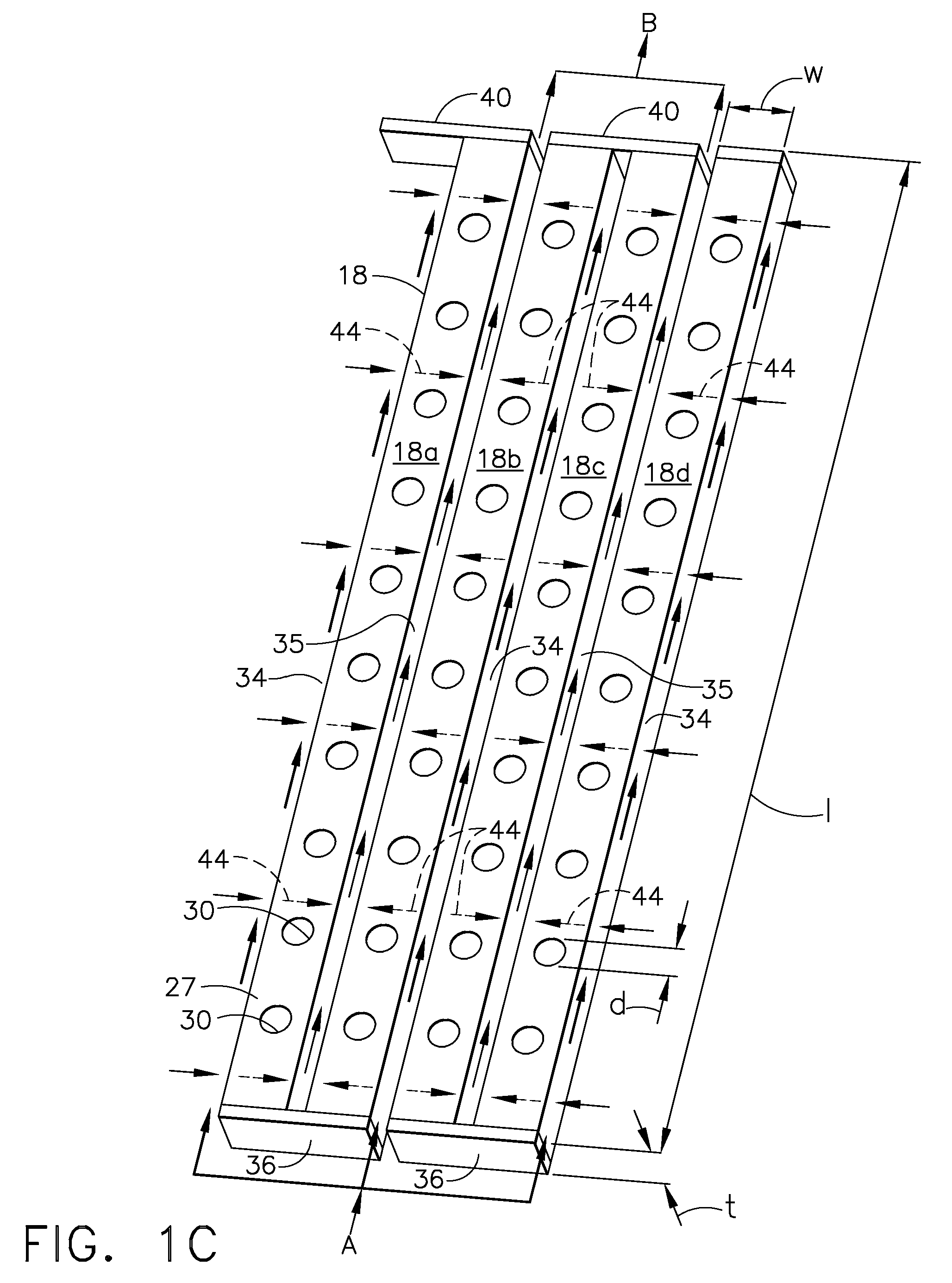High conductivity ceramic foam cold plate
a ceramic foam and high conductivity technology, applied in the field of cold plate methods and apparatuses, can solve the problems of unacceptably high pressure drop, reduced cooling reduced cooling efficiency of cold plate, so as to maximize the thermal performance of cold plate, improve cooling, and mitigate the effect of pressure drop change through the cold pla
- Summary
- Abstract
- Description
- Claims
- Application Information
AI Technical Summary
Benefits of technology
Problems solved by technology
Method used
Image
Examples
Embodiment Construction
[0025]The present invention now will be described more fully hereinafter with reference to the accompanying drawings, in which preferred embodiments of the invention are shown. This invention may, however, be embodied in many different forms and should not be construed as limited to the embodiments set forth herein; rather, these embodiments are provided so that this disclosure will be thorough and complete and will fully convey the scope of the invention to those skilled in the art. All composition percents are given as weight percents, unless otherwise specified.
[0026]Referring to FIGS. 1A and 1B, an exemplary embodiment of a cold plate 10 is shown. The cold plate 10 includes a housing 12 and a plurality of ceramic foam strips 18 disposed within the housing 12. The housing 12 includes a top and bottom cover plates 20, 22 respectively, side plates 24 and 26, a front manifold plate 28 and a rear manifold plate 29. The front manifold plate 28 includes an inlet port 14, and the rear m...
PUM
 Login to View More
Login to View More Abstract
Description
Claims
Application Information
 Login to View More
Login to View More - R&D
- Intellectual Property
- Life Sciences
- Materials
- Tech Scout
- Unparalleled Data Quality
- Higher Quality Content
- 60% Fewer Hallucinations
Browse by: Latest US Patents, China's latest patents, Technical Efficacy Thesaurus, Application Domain, Technology Topic, Popular Technical Reports.
© 2025 PatSnap. All rights reserved.Legal|Privacy policy|Modern Slavery Act Transparency Statement|Sitemap|About US| Contact US: help@patsnap.com



